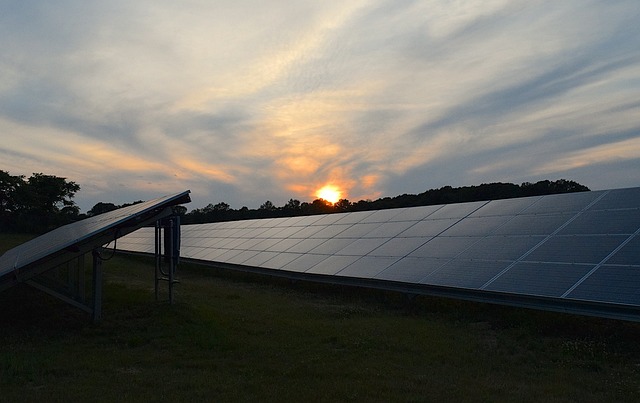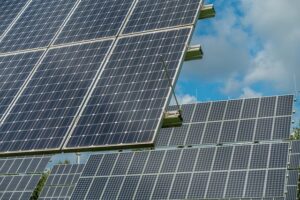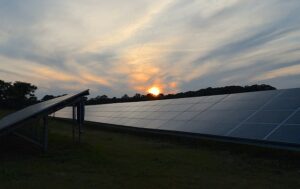
The Science Behind Solar Panels: How They Work
The quest for sustainable energy has intensified in recent years, leading to significant advancements in solar technology. Solar panels have emerged as one of the most viable options for harnessing renewable energy. But how do these panels transform sunlight into electricity? In this article, we will explore the intricate science behind solar panels, their components, and the fundamental principles that allow them to generate power.
Understanding Solar Energy
At the core of solar panel technology is solar energy, which originates from the sun. The sun emits enormous amounts of energy, with approximately 173,000 terawatts of solar energy reaching the Earth continuously. This energy can be captured and converted into usable electricity, providing an alternative to fossil fuels and reducing greenhouse gas emissions.
The Basics of Solar Panels
Solar panels, also known as photovoltaic (PV) panels, are devices that convert sunlight directly into electricity through the photovoltaic effect. They usually consist of multiple solar cells that work together to produce electricity. These cells are primarily made of semiconductor materials, commonly silicon, which plays a critical role in their functionality.
The Photovoltaic Effect
The photovoltaic effect is a phenomenon that occurs when certain materials absorb photons (particles of light) and release electrons, generating an electric current. This process can be broken down into several key steps:
Absorption of Light
When sunlight hits the solar panel, it is absorbed by the semiconductor material. Each photon that strikes the silicon atoms transfers its energy to the electrons within those atoms. This energy transfer is enough to free some electrons from their atomic bonds, creating electron-hole pairs.
Generation of Electron-Hole Pairs
As photons excite the electrons, they become free to move. The absence of an electron creates a “hole,” which is positively charged. For electricity to be generated, these free electrons need to flow in a specific direction. This is where the structure of the solar cell plays a critical role.
Creating an Electric Field
To facilitate the movement of electrons, solar cells are constructed with two layers of silicon, each doped with different materials to create a positive and negative charge. The top layer, known as the n-type layer, is doped with elements that have more electrons, while the bottom layer, the p-type layer, is doped with elements that have fewer electrons. This creates a built-in electric field at the junction between the two layers.
Flow of Electricity
The electric field generated at the p-n junction pushes the free electrons toward the conductive metal contacts located at the sides of the solar cell. As these electrons flow through an external circuit, they create an electric current, which can be used to power electrical devices or charge batteries.
Components of a Solar Panel
A solar panel integrates several components to optimize energy conversion and ensure reliability. Each of these components plays a vital role in the overall efficiency of the panel.
Solar Cells
The solar cells are the heart of the solar panel, determining its electricity-generating capacity. Most residential solar panels use monocrystalline or polycrystalline silicon cells. Monocrystalline cells are made from a single crystal structure, offering higher efficiency but at a greater cost. Polycrystalline cells consist of multiple silicon crystals and are typically less expensive with lower efficiency.
Glass Cover
The front layer of a solar panel is a glass cover, designed to protect the solar cells from environmental elements while allowing sunlight to penetrate. This glass must be durable and capable of withstanding extreme weather conditions while minimizing light reflection.
Backing Material
On the backside of the solar panel, a layer of weather-resistant backing material is installed. This surface often comprises a polymer that helps protect the solar cells from moisture and physical damage.
Frame
The solar panel frame, usually made of aluminum, provides structural support and facilitates the mounting of the panel on various surfaces. The frame adds durability and enables easy installation and maintenance.
Wiring and Junction Box
Wiring interconnects the solar cells, allowing the flow of electricity. A junction box encloses the wiring and connects the panel to the electrical inverter and storage systems. The junction box also protects against external elements and facilitates easy connections.
The Role of Inverters in Solar Energy Systems
While solar panels generate direct current (DC) electricity, most homes and appliances utilize alternating current (AC) electricity. To convert DC electricity to AC electricity, an inverter is required. This device plays an essential role in a solar energy system by transforming the output from the solar panels into a usable form for household appliances.
Inverters come in various forms, including string inverters, microinverters, and power optimizers, each with its advantages and applications. For instance, string inverters are cost-effective solutions for systems with evenly distributed sunlight, while microinverters offer better performance for systems that may be partially shaded or oriented in different directions.
Efficiency of Solar Panels
The efficiency of solar panels refers to the proportion of sunlight that can be converted into usable electricity. Several factors contribute to the efficiency of solar panels, including the type of materials used, design and technology, and environmental conditions.
Technology Advancements
Recent technological advancements have led to the development of high-efficiency solar cells, such as bifacial solar panels, which harness sunlight from both sides. Researchers are also exploring alternative materials like perovskite and organic photovoltaic cells, which promise to enhance efficiency while reducing production costs.
Environmental Factors
The performance of solar panels can also be affected by environmental factors. Factors such as shading, temperature, and orientation can impact how efficiently a solar panel converts sunlight into electricity. Optimal positioning and regular maintenance, including cleaning and inspections, help ensure maximum efficiency.
The Benefits of Solar Energy
Solar energy offers numerous benefits that extend beyond its environmental advantages. Here are some key benefits of using solar panels:
Renewable and Sustainable
Solar energy is a renewable resource; as long as the sun exists, we can harness its energy. This sustainability is crucial in the effort to combat climate change and reduce reliance on fossil fuels.
Reduction of Electric Bills
Implementing solar panels can significantly reduce electricity bills, as homeowners can generate their power. Depending on the size of the solar system, many users reduce their electricity costs dramatically or become energy independent.
Incentives and Tax Benefits
Many governments offer incentives, tax credits, and rebates for installing solar panels, making the initial investment more appealing. These financial incentives can help offset installation costs and shorten the payback period for homeowners.
Increased Property Value
Homes equipped with solar panels often see an increase in property value, making them attractive investments for prospective buyers looking for energy-efficient features.
Future Trends in Solar Technology
The future of solar energy is promising, with ongoing research and innovation driving the industry forward. Some emerging trends include:
Energy Storage Solutions
Energy storage technologies, such as solar batteries, are becoming increasingly important for residential solar systems. These solutions enable homes to store excess energy generated during the day for use at night or during cloudy periods, optimizing energy consumption.
Building-Integrated Photovoltaics (BIPV)
BIPV is an innovative approach integrating solar technology directly into building materials, such as solar roofs and windows. This concept allows for functional and aesthetic incorporation of solar energy generation into new construction projects.
Community Solar Projects
For those unable to install solar panels on their property, community solar projects offer a collaborative solution. These initiatives allow individuals to subscribe to a shared solar array, providing access to clean energy without the need for personal installations.
Conclusion
Understanding the science behind solar panels offers insight into how they convert sunlight into usable energy. By harnessing the photovoltaic effect and utilizing advanced technology, solar panels provide a sustainable, renewable energy source that holds the potential to power homes and businesses for generations to come. As the industry continues to evolve, solar energy will play a more significant role in our quest for a cleaner, more efficient energy landscape.



